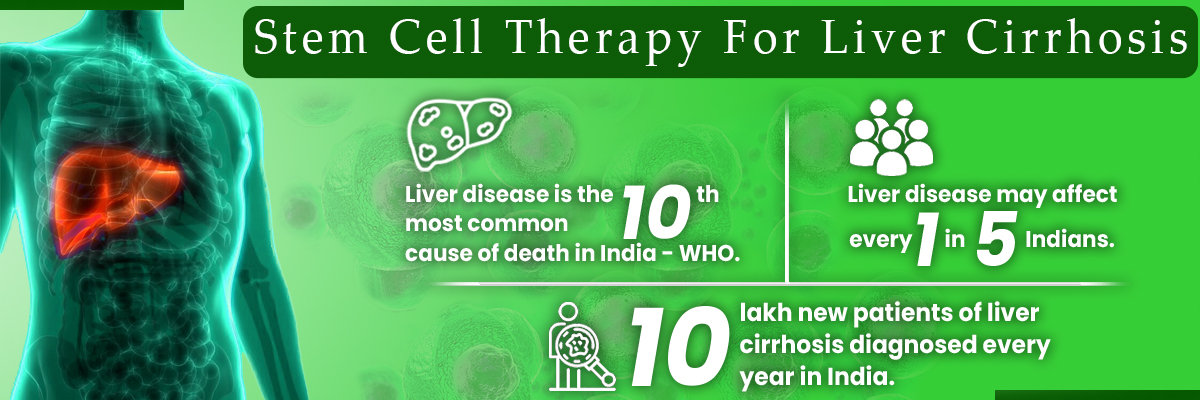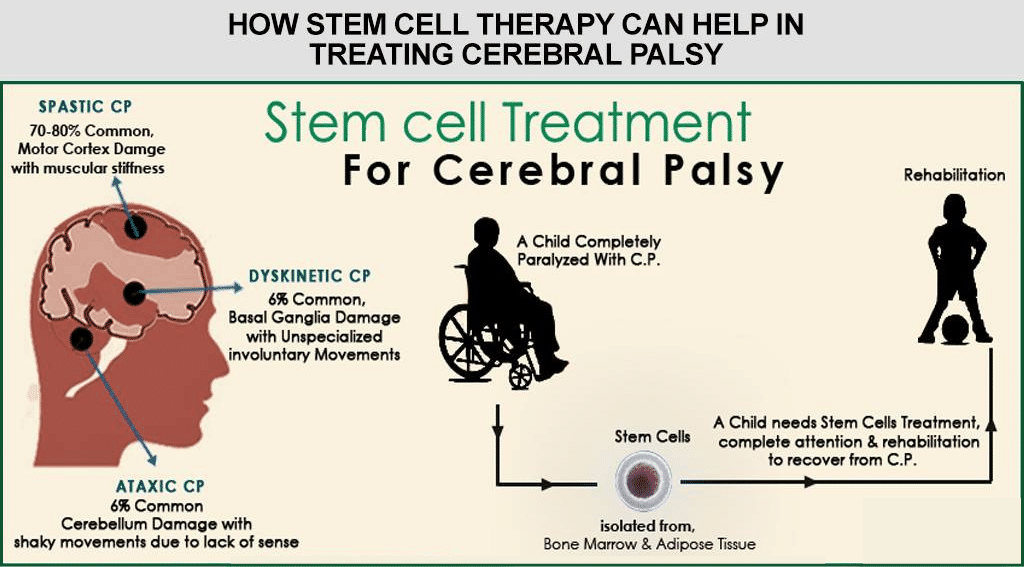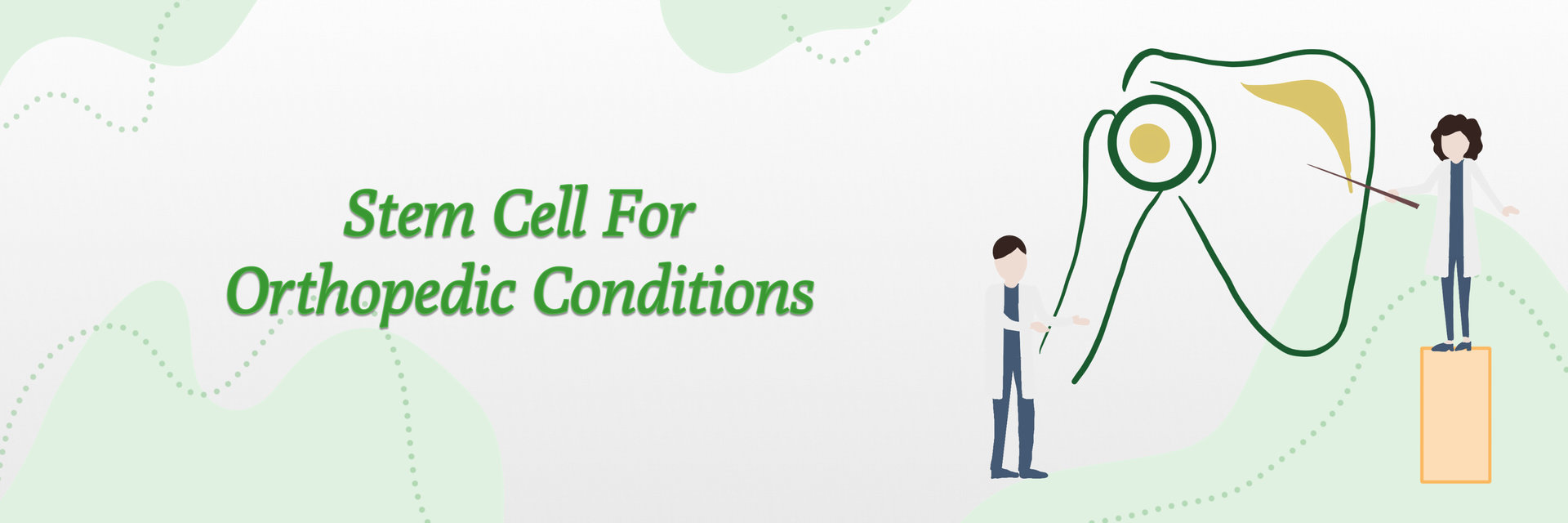
Overview
Orthopedic conditions, including arthritis, fractures, and ligament injuries, affect millions worldwide. In India, orthopedic issues are a significant health concern, with statistics revealing that nearly 15 million Indians suffer from joint problems and an estimated 30% of the population over 60 years old are affected by osteoarthritis. Traditional treatments, such as surgery and medication, provide relief but often come with limitations and side effects. In recent years, stem cell therapy for orthopedic conditions has emerged as a promising alternative, offering potential regenerative solutions. Research indicates that over 60% of patients with chronic joint pain see improvement after stem cell treatments. This blog will delve into the current role of stem cells in orthopedic surgery, compare their effectiveness to traditional surgery, and examine their potential in bone repair.
So, what causes an orthopedic condition?
It could be several things, but it all comes down to the following three reasons:
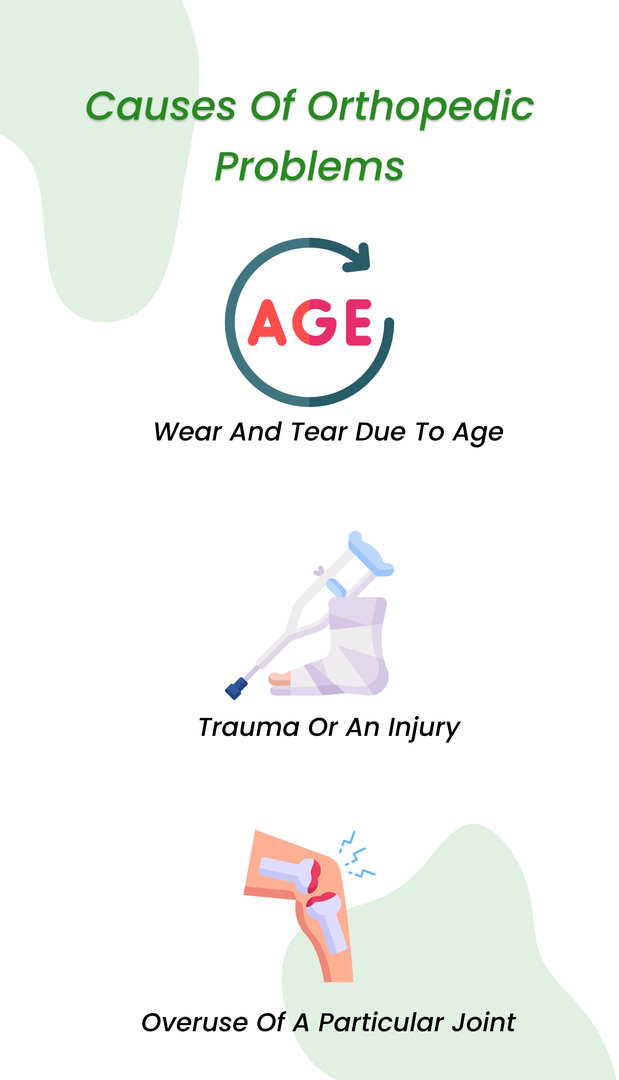
Orthopedic conditions can manifest as:
The two main types of orthopedic conditions are acute and chronic.
Usually, acute conditions result from an injury, while chronic conditions are related to aging.
Orthopedic conditions can manifest as various symptoms. Your health is too important to ignore – schedule your appointment now for a thorough evaluation and personalized care.
Some specific orthopedic conditions are:
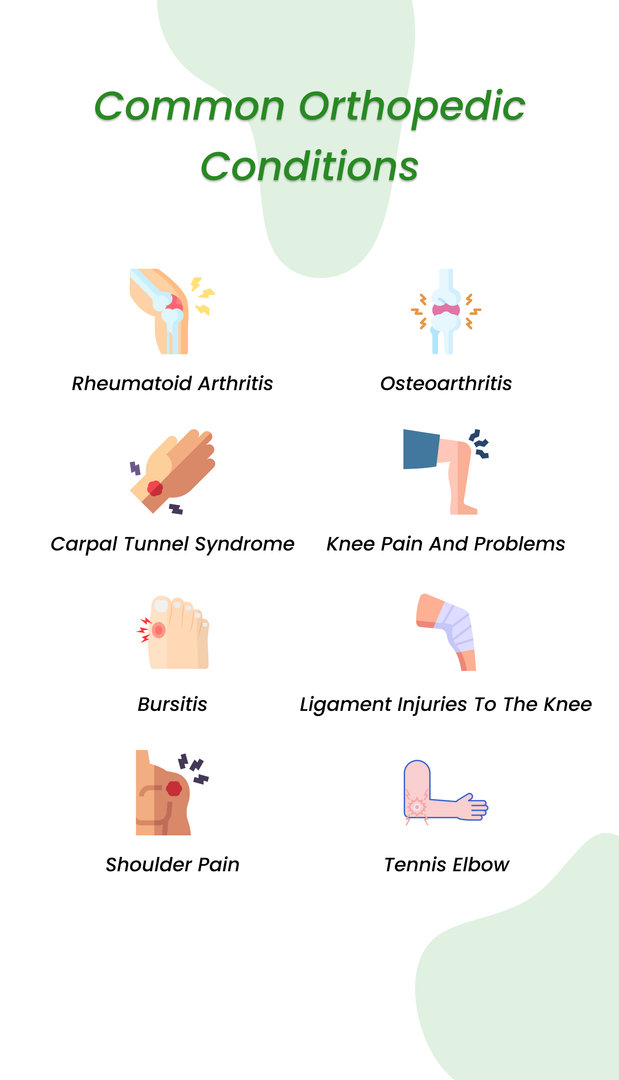
Are you or your loved one diagnosed with any of the above orthopedic conditions?
Then Stem Cell Therapy is the answer to all your orthopedic problems.
How does stem cell treat orthopedic conditions?
Stem cells are unspecialized cells in our bodies that can differentiate into any tissue. Adult stem cells are found in several regions of our bodies, including the bone marrow, fatty tissue, and circulating blood.
They release growth factors, which repair damaged cells. They also form new cells and reduce our body’s inflammatory response.
Well, researchers realized that stem cells could repair the worn-out parts of joints.
For orthopedic stem cell therapy, bone marrow-derived autologous mesenchymal cells are used. This treatment is still undergoing clinical trials and is not FDA-approved.
So, how do you determine if you’re eligible for orthopedic stem cell treatment?
Each clinical trial has its own stringent set of rules. But a few general criteria to help you get started are:
- The injury or disorder should be recent
- You should not be on blood thinners or have an extensive medical history
- Being younger is an advantage when getting this treatment
How are Stem Cells used in Orthopedics?
How do stem cells make their way to the correct part of your body? We have detailed the entire procedure for you, so you know what to expect going in.
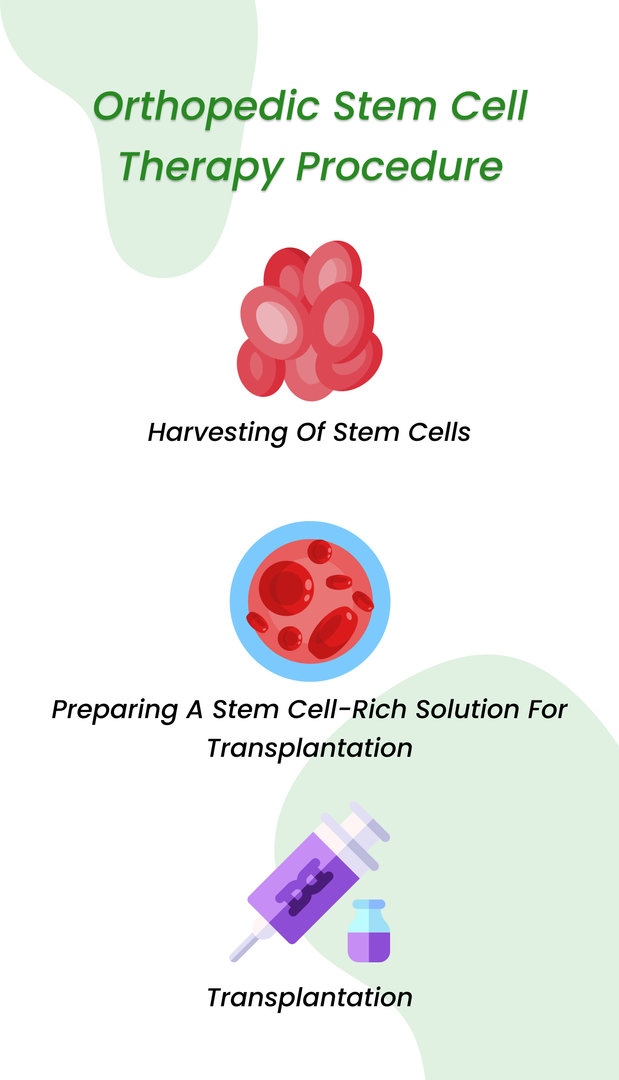
- The very first step is the harvesting of stem cells. In almost all clinical trials, the patient’s stem cells are preferred over donor stem cells. These stem cells are extracted from the bone marrow of the hip bone. This step is performed under local anesthesia to ensure you feel no pain, and it is completed in under two hours.
- The next step is preparing a stem cell-rich solution for transplantation. This is done in a stem cell laboratory and takes three to four hours.
- The final step is transplantation. The prepared solution is directly injected into the affected part using an imaging technique like ultrasound or CT scan. This step is also done under local anesthesia and takes about an hour.
For most cases, a three-day hospital stay is enough to complete this treatment.
What are the Orthopedic Conditions that get cured with Stem Cells?
As we have already seen, there are several orthopedic conditions. But which ones can be treated with advanced orthopedic stem cell therapy?
We’ve made a list of some orthopedic applications of stem cell therapy.
Stem cell therapy can be used in multiple ways to treat orthopedic injuries. Many doctors are now using stem cell treatment in conjunction with surgery and have been getting amazing results.
Of course, orthopedic stem cell treatment can also be done without surgery. It’s an excellent choice of treatment for acute injuries. However, starting stem cell treatment within the first six months of sustaining the injury is advisable.
Stem Cell Therapy for Joints
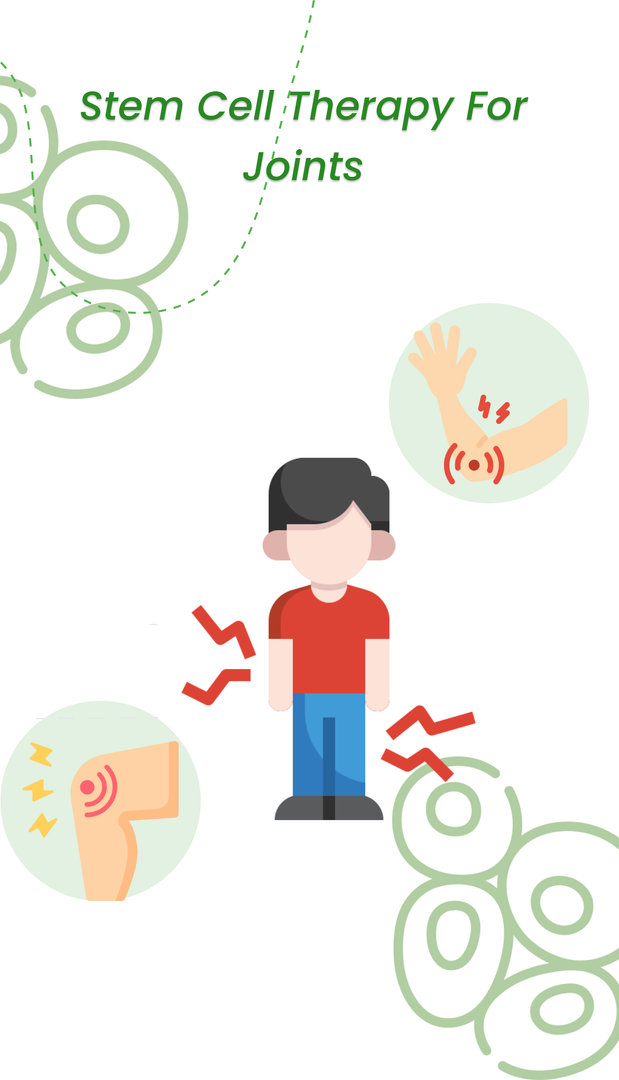
We are sure you’re wondering—can stem cells repair joints?
The short answer is yes, they can.
We have already talked about the repair and regenerative properties of stem cells.
But now, there is another exciting new development in stem cells. Using tissue engineering, researchers have created artificial tissue from stem cells in the lab.
They insert this tissue into the damaged joint, which then repairs and rebuilds damaged bone, ligaments, and cartilage.
Discover the potential of Stem Cell Therapy for Joints. Take charge of your health and life – contact us today for personalized insights and explore treatment options.
Stem Cell Therapy for Knees

Osteoarthritis is the most common orthopedic condition of the knees. Stem cells have also shown good results in treating acute knee injuries.
Some advantages of orthopedic stem cell injections are that the procedure is safe, effective, and convenient. You can resume your daily activities 1-2 days after the treatment. However, you must avoid strenuous physical activity for four to six weeks.
We are sure you must now be wondering how much does stem cell for knees cost?
You can look forward to reduced pain and increased mobility after this procedure.
Stem Cell Therapy for Back Pain
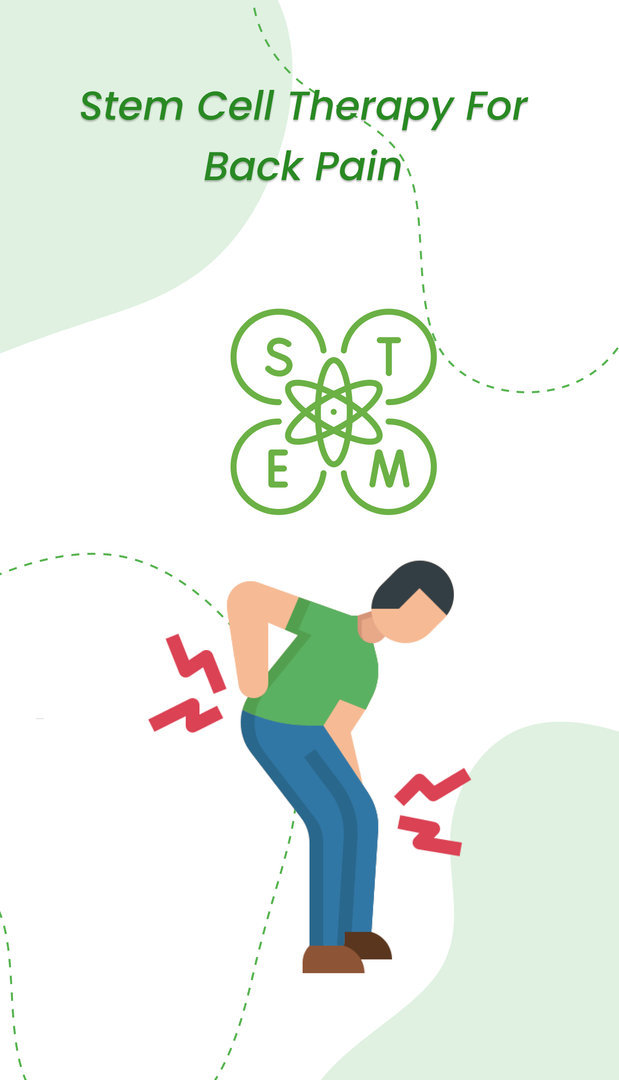
Damaged vertebral discs usually cause back pain.
Does stem cell therapy work for back pain?
Stem cell therapy does provide relief for back pains. However, it would work better if the damaged region were localized.
This means the fewer discs damaged, the better the results will be. An MRI is required to assess the damage to individual discs.
Stem Cell Therapy for Arthritis
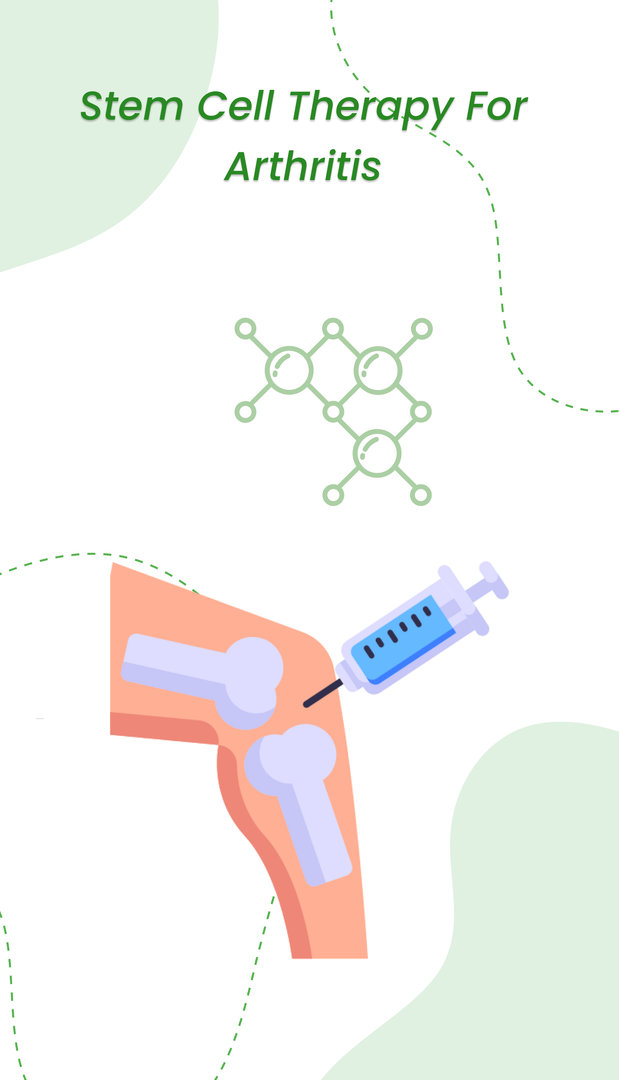
Stem cell therapy is useful in treating rheumatoid arthritis and osteoporosis. Seventy per cent of patients with Rheumatoid Arthritis reported a significant reduction in pain and inflammation after stem cell treatment.
75% of patients afflicted with osteoporosis displayed a reduction in pain and improved mobility after undergoing stem cell treatment.
Yes, you read that right!
Stem Cell Therapy for Hips
Stem cell therapy is an excellent alternative to surgery for patients with chronic hip pain. Nearly 76% of patients reported improved mobility and a significant reduction in pain one month after undergoing stem cell therapy.
Stem Cell Therapy for Shoulder
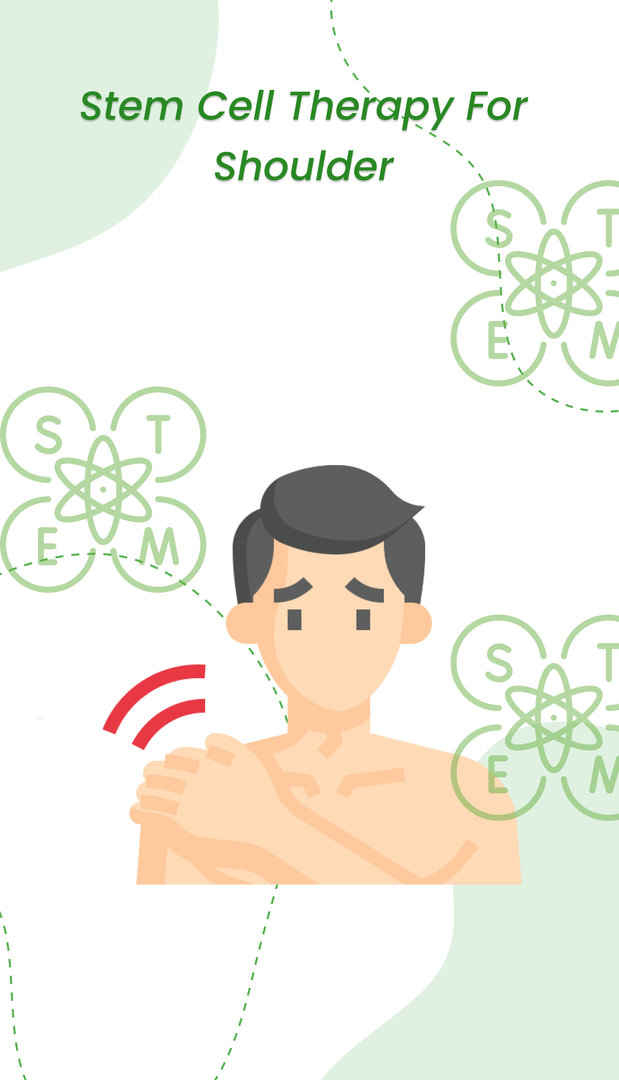
Shoulder injuries usually occur due to trauma or sports. A majority of cases see a recurrence of these injuries after surgery.
So, does stem cell therapy work for shoulder pain?
It absolutely does.
Thanks to their regenerative mechanism, it could offer a permanent solution to shoulder injuries.
However, this treatment is still under clinical trials, so you must do your homework before selecting your physician.
Explore Stem Cell Therapy for Shoulder ailments. Take the first step to recovery – get in touch with us for personalized treatment information and support.
Stem Cell Therapy for Neck Pain
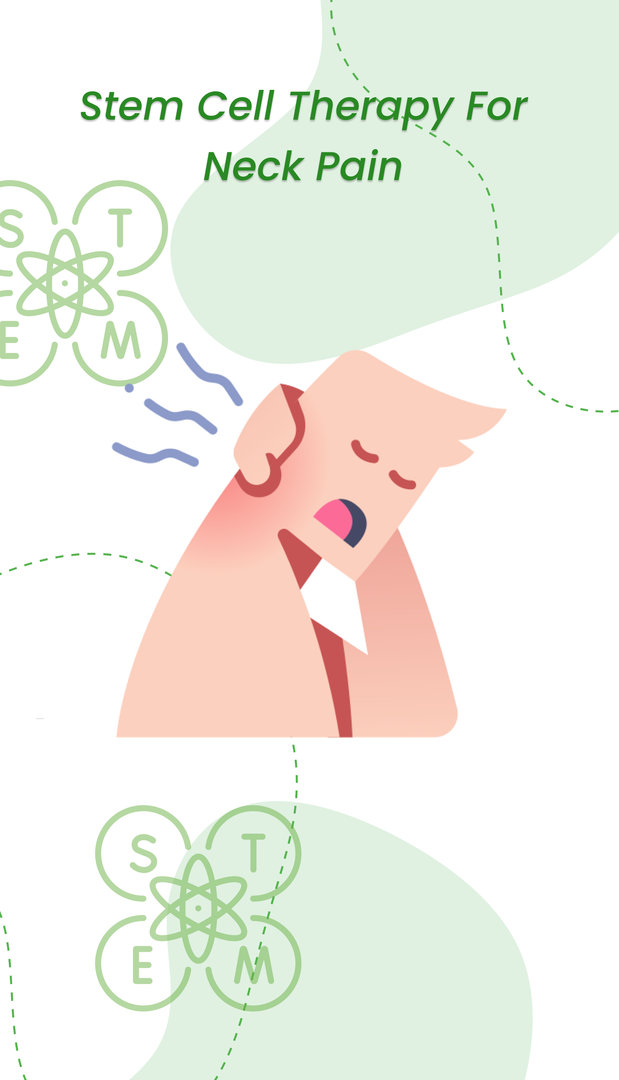
Neck pain is usually caused due to damage to the spine in the cervical area of the vertebrae. Unfortunately, very few effective treatments exist for this issue.
Stem cell treatment is proving to be a good non-surgical option for treating neck pain. The stem cells are usually injected into the cerebrospinal fluid for neck pain treatment.
Stem Cell Therapy for Herniated Disc
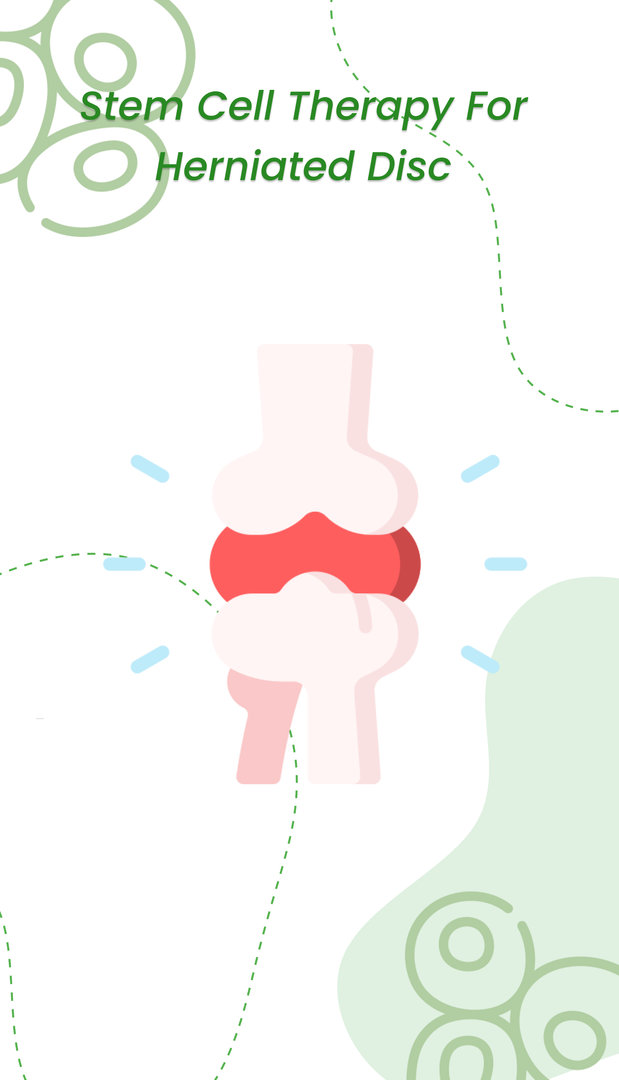
Herniated discs are most commonly seen in the lower back region. It is a painful chronic condition. Stem cells are a good alternative to surgery.
The stem cells are injected directly into the herniated disc, and pain reduction is observed within four weeks.
Stem Cell Therapy for Degenerative Disc Disease
Degenerative disc disease results from wear and tear due to ageing. Stem cell treatment has only had partial success in treating this condition.
Patients with just one or two damaged discs have shown excellent improvement. However, the results are less satisfactory when multiple discs are involved.
Stem Cell ACL Repair
ACL damage is usually seen in sports athletes. Stem cell repair is a very good non-surgical alternative. This treatment has shown a success rate of 80-95%!
However, most athletes still require six months to return to their training.
Stem Cell Therapy for Rotator Cuff
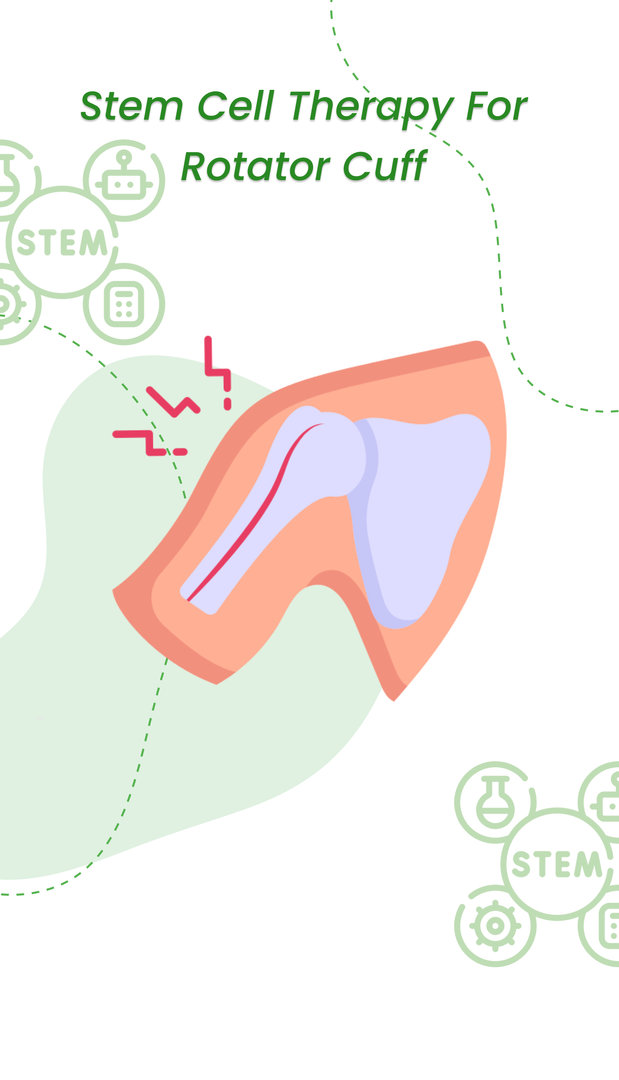
It is well-known that treating a rotator cuff injury surgically produces unsatisfactory results. Stem cells have produced comparatively better results.
However, trials for this condition are still in their initial stages, so data is limited.
Stem Cell Therapy for Carpal Tunnel Syndrome
We live in the age of technology and are seeing a rise in related injuries. Wrist pain can be debilitating. Well, new problems require new solutions.
Stem cells are an effective non-surgical option that provides long-term relief.
Discover the potential of Stem Cell Therapy for Carpal Tunnel Syndrome. Your well-being is our priority – call us today to book your appointment and explore treatment options tailored to your needs.
Average Cost for Stem Cell Orthopedic
The cost of stem cell treatment depends on many factors, such as the severity of the disorder, the number of cycles required, the type of stem cells used, and the kind of facility you choose to have your treatment at.
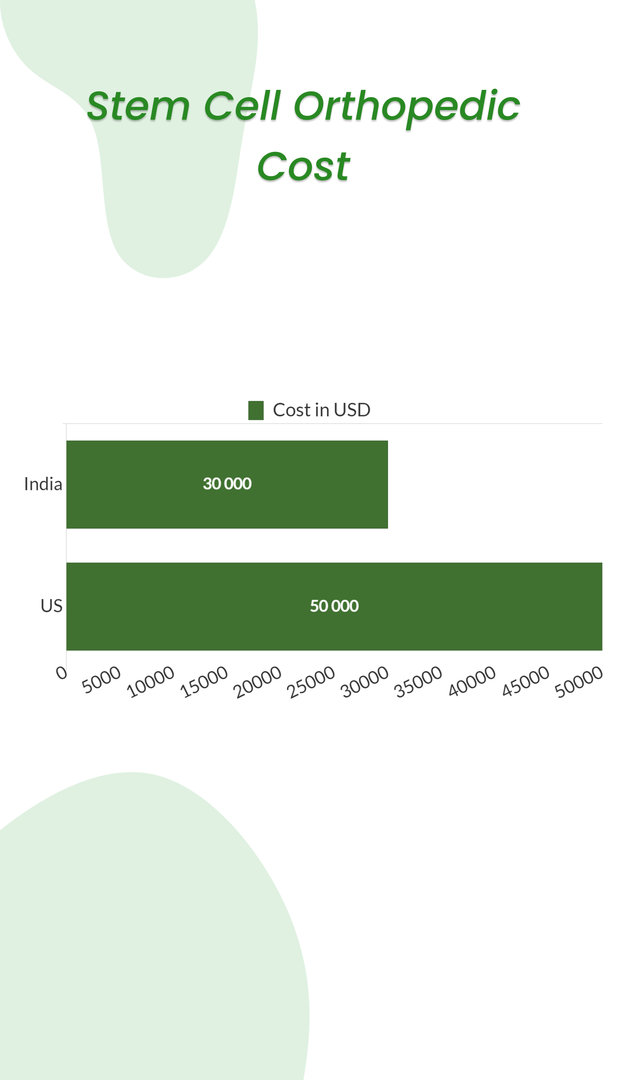
In India, the cost of stem cell orthopedics is 8000 to 12,000 USD. The same treatment costs 30,000 to 50,000 USD for a single cycle in the US.
Risks/Side Effects and Benefits of Stem Cell Therapy for Orthopedic Issues
Like every medical treatment, stem cell orthopedics has risks and benefits.
Do the benefits of orthopedic stem cell therapy outweigh the risks?
Read on and find out for yourself.
Benefits
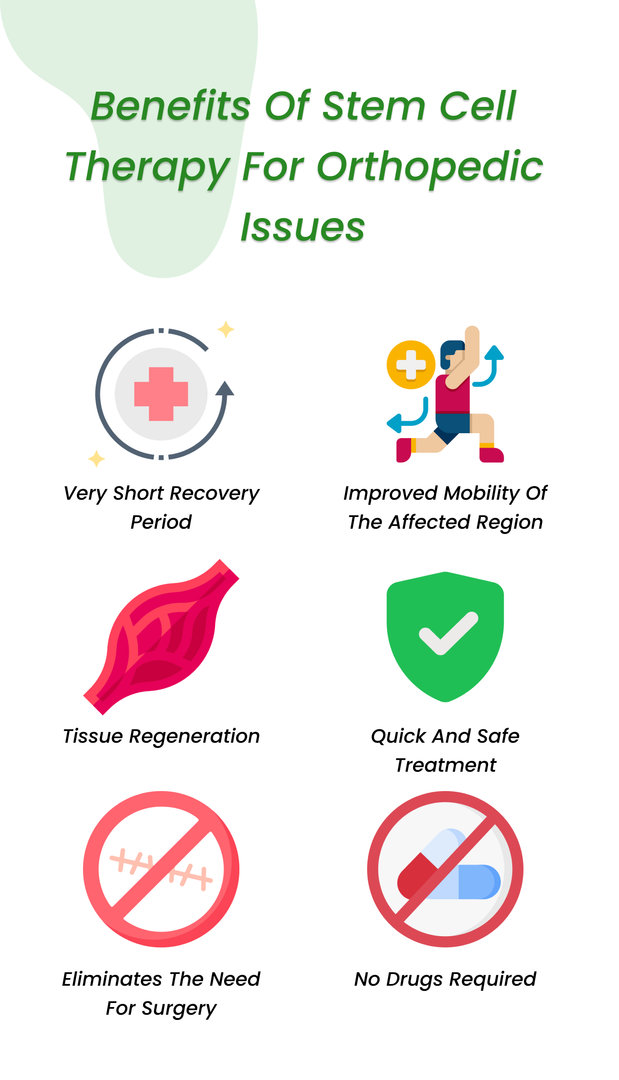
Risks
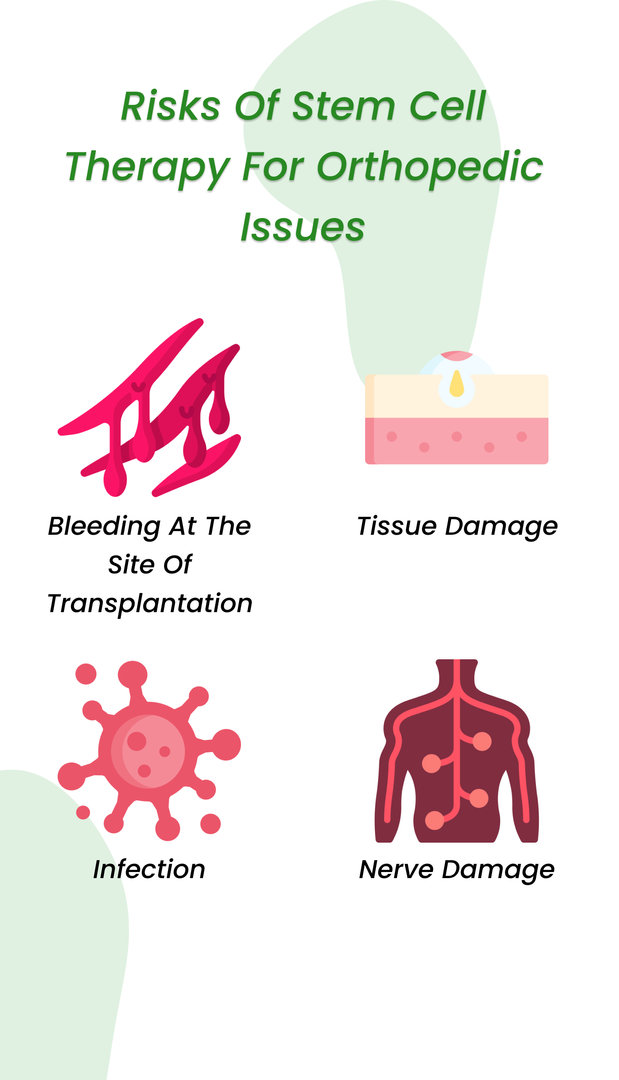
You will be quite glad to know that any trial has reported no long-term side effects to date.
Success Rate of Stem Cell for Orthopedic Conditions

The success rate of stem cell treatment depends on various factors, such as the severity of the injury, the patient's age, the type of stem cells used, and proper physiotherapy after the treatment.
Most trials have a success rate of 80%, and nearly all patients report a significant improvement in mobility and pain alleviation.
Is Stem Cell Therapy Better Than Surgery in Orthopedic Conditions?
The debate between stem cell therapy and traditional surgery for orthopedic conditions hinges on several factors, including the type of condition, severity, patient health, and treatment goals.
Advantages of Stem Cell Therapy
- Minimally Invasive: Stem cell therapy is typically less invasive than surgery, involving injections rather than large incisions.
- Reduced Recovery Time: Patients undergoing stem cell therapy often experience shorter recovery than surgical patients.
- Lower Risk of Complications: Stem cell therapy has a lower risk of complications associated with surgery, such as infections and blood clots.
- Potential for Regeneration: Unlike surgery, which often focuses on repairing or replacing damaged tissues, stem cell therapy aims to regenerate and restore the original tissue.
Limitations and Considerations
- Effectiveness: The effectiveness of stem cell therapy can vary based on the treatment condition, the type of stem cells used, and the delivery method.
- Cost: Stem cell therapy can be expensive and is often not covered by insurance.
- Long-term Outcomes: While promising, the long-term outcomes and durability of stem cell treatments are still being studied.
| Aspect | Stem Cell Therapy | Traditional Surgery |
| Invasiveness | Minimally invasive | Highly invasive |
| Recovery Time | Shorter | Longer |
| Risk of Complications | Lower | Higher |
| Cost | Higher | Variable |
| Long-term Outcomes | Still under research | Established |
Can Stem Cells Repair Bones?
Bone repair is a critical area of orthopedic medicine where stem cells show significant potential. Fractures, non-union fractures, and bone defects are common challenges that stem cell therapy aims to address.
Mechanism of Action
Stem cells contribute to bone repair through several mechanisms:
- Osteogenic Differentiation: MSCs differentiate into osteoblasts, essential for new bone formation.
- Paracrine Signaling: Stem cells release growth factors and cytokines that promote tissue regeneration and recruit other cells to the injury site.
- Angiogenesis: Stem cells enhance blood vessel formation, improving nutrient and oxygen supply to the healing bone.
Studies have shown that stem cell therapy can accelerate bone healing and improve outcomes for patients with complex fractures. For example, a study published in "Stem Cells International" reported successful bone regeneration in patients with critical-sized bone defects treated with MSCs. Another study in "The Journal of Orthopaedic Research" demonstrated improved healing in patients with tibial non-union fractures treated with autologous stem cells.
Stem Cell and PRP Therapy for Orthopedic Conditions

PRP, or platelet-rich plasma, is also gaining popularity for treating orthopedic conditions. Some of its properties are similar to stem cells, which can confuse patients when selecting a treatment.
To paint a clearer picture, we have made a comparison table between the two therapies.
| PRP Therapy | Stem Cell Therapy |
| PRP only repairs damaged tissue. | Stem Cells not only repair, but also regenerate. They also have immunosuppressive and anti-inflammatory properties. |
| PRP is only preferred in young patients with no medical history. | Stem cells give more promising results and are used in a wider range of orthopedic conditions. |
| PRP is a basic treatment. | Stem cell therapy is a more advanced treatment. |
| The benefits of PRP currently last for a short duration. | The benefits of stem cell therapy last longer (Up to a few years). |




